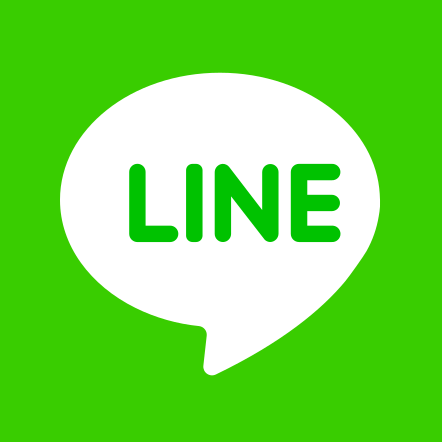In the fast-paced world of manufacturing, every second counts. Even the smallest disruption in your production line can lead to costly downtime and missed deadlines. Bowl feeders play a critical role in automating the feeding of parts and components, but like any mechanical system, they are not immune to occasional problems.
At TNC Bowl Feeder Company, we understand the challenges manufacturers face when their feeding systems don’t perform as expected. That’s why we don’t just design and deliver custom bowl feeders — we also provide comprehensive troubleshooting and support to keep your production running smoothly.
In this blog, we’ll dive deep into some of the most common bowl feeder issues, explore why they happen, and show you how TNC’s expert team efficiently resolves them to minimize downtime and maximize productivity.
1. Part Jamming or Overlapping
The Problem:
One of the most frustrating issues in feeding systems is part jamming. This occurs when parts get stuck inside the bowl or overlap on the track, causing a backup that stops the entire line. Jamming not only interrupts production but can also damage delicate parts or the feeder itself.
Why It Happens:
* Parts vary slightly in size or shape beyond the feeder’s tolerance.
* Track design is too narrow or has sharp bends that cause bottlenecks.
* Orientation tooling isn’t properly aligned or missing.
How We Solve It:
At TNC, we begin with a thorough analysis of your product’s physical characteristics and feeding behavior. Using 3D CAD modeling and real-life prototyping, we adjust:
* Track geometry to create smoother, more gradual curves and wider passages where needed.
* Orientation devices such as air jets or separator fingers to keep parts separated.
* Escapements and reject paths that allow faulty or overlapping parts to exit safely without jamming the system.
By running extensive simulations before installation, we drastically reduce the risk of jamming and ensure your system runs efficiently from day one.
2. Irregular Feed Rate or Vibration Issues
The Problem:
An inconsistent feed rate disrupts the entire production rhythm. You might notice parts feeding too fast, too slow, or in unpredictable bursts. Irregular vibratory motion can also accelerate wear and tear on components.
Why It Happens:
* Springs may loosen or degrade over time, altering vibration frequency.
* Power supply issues cause unstable voltage or frequency fluctuations.
* Coils may become dirty or misaligned, reducing electromagnetic efficiency.
How We Solve It:
Our approach includes a full mechanical and electrical system check:
* Recalibrating or replacing springs to restore correct tension and natural frequency.
* Inspecting power supplies and wiring to ensure stable and consistent current.
* Cleaning and realigning coils for optimum magnetic field generation.
For critical, high-throughput lines, we can install smart vibratory controllers that automatically adjust vibration frequency and amplitude based on real-time feedback, keeping feed rates stable under varying load conditions.
3. Inconsistent Part Orientation
The Problem:
When parts don’t arrive at the assembly or pick-up point properly oriented, it leads to rejection, rework, or manual intervention. This is especially problematic with automated robotic systems that rely on parts being in a precise position.
Why It Happens:
* The feeder design may not fully account for part asymmetry or unstable resting positions.
* Orientation tooling is insufficient or improperly positioned.
* Excessive vibration speed can cause parts to flip unpredictably.
How We Solve It:
We employ a combination of engineering techniques:
* 3D modeling and physical tests to understand how parts behave when vibrating and moving.
* Implementing flip, roll, or air-blow devices to force parts into the correct position.
* Designing tapered rails and carefully controlling vibration intensity to encourage gradual and predictable orientation.
Our goal is to guarantee parts are delivered consistently, minimizing downtime and manual corrections.
4. Excessive Noise or Vibration
The Problem:
Loud, unusual noises or excessive vibrations are not just an annoyance; they are signs of underlying mechanical problems that can lead to feeder failure or damage to the production line.
Why It Happens:
* Fasteners and mounting components become loose over time.
* The base drive unit is imbalanced or worn.
* The feeder is overloaded with parts that exceed design limits.
How We Solve It:
Our technicians perform a detailed inspection:
* Tightening and replacing worn or loose fasteners.
* Balancing the base drive and realigning components.
* Recommending heavier-duty base plates or upgraded drive units if your product or production volume demands exceed the original specifications.
We also provide noise-reduction solutions such as vibration dampeners and sound-absorbing materials, improving the work environment without sacrificing feeder performance.
5. Dust, Oil, or Residue Build-Up
The Problem:
Over time, dust, oil, and other residues can accumulate on the feeder bowl and tracks, causing parts to slip, stick, or feed inconsistently.
Why It Happens:
* Parts with oily or powdery coatings leave residues.
* Factory environments may have high levels of dust or airborne contaminants.
* Lack of regular cleaning and maintenance allows buildup to worsen.
How We Solve It:
To combat contamination, we recommend:
* Regular cleaning schedules using factory-safe solvents to remove buildup.
* Applying anti-stick coatings or specialized finishes to the bowl surface.
* Designing enclosed feeders or shields to protect the system in dusty or oily environments.
For proactive maintenance, optional sensors can be added to detect clogs or slow feeding, allowing your team to intervene before the problem impacts production.
Why Choose TNC for Troubleshooting and Support?
Our commitment extends far beyond manufacturing bowl feeders. We offer:
* On-site inspections and diagnostics by experienced engineers.
* Customized reconfiguration services to adapt your feeders when your products or production requirements change.
* Preventive maintenance programs tailored to your production schedule.
* Quick access to replacement parts and expert advice, minimizing your downtime.
We understand that your success depends on reliability and performance — and we stand ready to support you at every step.
Get Your Production Line Back on Track Today
Don’t let bowl feeder issues slow down your manufacturing. Contact TNC Bowl Feeder Company for a professional inspection, troubleshooting assistance, or to discuss how we can optimize your feeding system for your unique products and production goals.
Reach out to us via phone, email, or schedule a free consultation online — and experience the TNC difference in fast, effective, and reliable bowl feeder support.
🔗Contact Us | 📧 Email: [email protected]
Your Components, Our Solutions — You Name It, We Build It.




Pingback: Feeder Machine Integration for Streamlined Production in Malaysia - TNC